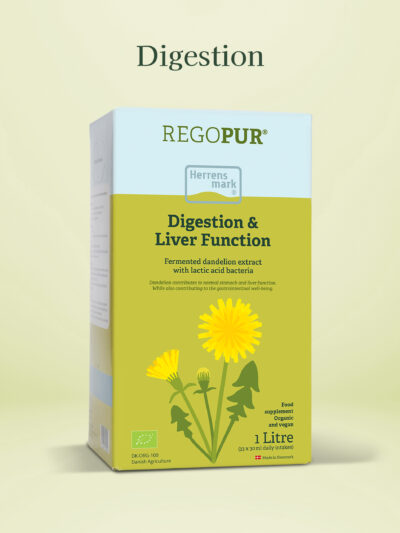Red clover (trifolium pratense) can be beneficial to women as they go through the menopause as this small red-flowered herb can help to ease this period of life and symptoms such as hot flushes1. But the way you consume red clover is not unimportant. These plant agents are not particularly easily accessible to the human body.
The red clover and the four stomachs
Cows have four stomachs, which makes a lot of sense when you see them munching their way through a whole field full of red clover. A cow chews its way through the different types of grass with their four “smart” stomachs, which can convert stubborn grasses and small fine red clovers into nutrition for the 600 kg animal. There is plenty of information available on the Internet about how a cow does not chew the grass particularly much, but it would be a pity if we didn’t give you a brief overview of a cow’s digestive process here.
How cows digest what they eat
First of all, the cow swallows the grass etc. down into its first stomach (called the rumen) where it is mixed with bacteria, parasites and fungi. It then regurgitates it all up again, munches it some more and sends it off into the next stomach, the honeycombed “reticulum” stomach, which distributes it so that only the most finely divided food goes on to a third stomach called the “omasum”. From there, water is filtered out and passed into the bloodstream while the rest moves on to the cow’s “abomasum” (or true stomach), which most closely resembles our own stomach. Here, hydrochloric acid kills the bacteria, parasites and fungi from the rumen. Only now is all the food broken down, so that it can subsequently be absorbed by the intestines in the same way as we bipeds.
So how can humans benefit from red clover?
The fact that we don’t have four stomachs means that if we ate grass, all we would get would be a stomach ache, which is why we process our food. It also means that we can’t just eat red clover straight from the meadow like a cow and expect to get any nutrition out of it. It is not until it is prepared and then chewed thoroughly that this becomes a real possibility.
We do, however, have one thing in common with cows. We can really benefit from the active agents found in the little red clover plant. We can benefit particularly well if we can encourage the natural micro-organisms (lactic acid bacteria) that are always found on fresh plants to do their thing. Everything in nature is covered with microbes and bacteria that are too tiny for the human eye to see as they wait to get to the sugars that are contained in living organisms. Before they can do that, however, the organic material needs to break down a little.
Why we have to ferment red clover
At Herrens Mark, we make use of the natural micro-organisms by gently harvesting the fresh red clover and pouring it into large tanks where the clover is mixed with a few extra lactic acid bacteria – that we also call a seed culture. This process is called fermentation and when it occurs, it not only opens the cell walls so that the active substances flow out of the plant walls, it also produces a state where the end result is that the lactic acid bacteria, together with the lactic acid bacteria from our own intestines, can transport the substances into the bloodstream across the intestinal wall. The plant agents are therefore more absorbable when the red clover is fermented.
In technical terms, the active plant agents from the red clover (isoflavones/phytoestrogens) are aglyconic They must be aglyconic before they can be absorbed. They achieve this state through fermentation. During fermentation, the sugar molecules are split off so that the isoflavones take on a reduced form that can be absorbed directly into the bloodstream. More than 90% of the isoflavones in our fermented red clover extract are aglyconic.
To find out more about fermentation, please click here. If you are more interested in learning about how red clover can be beneficial to menopausal women, you can find that information here.
REGOBONE 1 and 2 Litre – Organic
REGOMEO 1 & 2 Liter – Organic
REGOPUR 1 & 2 litre – Organic
Anprisninger
- Rødkløver hjælper kvinder til en rolig og behagelig overgangsalder ifm. hedeture, øget svedtendens og rastløshed (ID: 4146)




